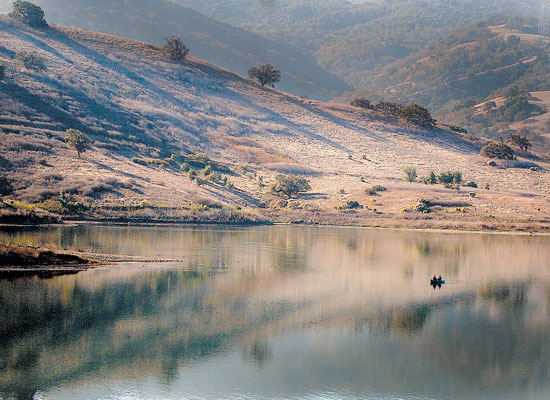
Update: University professor says spread of mussels should have
been avoided
Recreational boaters from San Benito and Santa Clara counties will be denied access to six reservoirs in Northern California, a Bay Area utility district has announced.
“The East Bay Municipal Utility District will severely restrict boating on its reservoirs this recreational season, which begins in February, to try to keep two tiny but destructive invasive mussel species from potentially shutting down the water delivery system,” the agency said.
An invasive biology expert at the University of California, Davis said the state could have avoided the spread of zebra and quagga mussels into California waterways.
Zebra mussels were found in San Justo Reservoir south of Hollister this month. It was the first time the invasive species – which has the ability to clog water pipes and choke out local aquatic life – was found in California.
Beginning in February, boaters from outside of California – and from Southern California, and Santa Clara and San Benito counties – won’t be allowed to launch on the six reservoirs. The quagga mussel, a close cousin of the zebra mussel, was found in Southern California last year.
Boats using the reservoirs will undergo inspections before launching.
Those waters include Pardee and Camanche reservoirs in Amador and Calaveras counties; San Pablo, Lafayette and Briones reservoirs in Contra Costa County; and Lake Chabot in Alameda County.
The invasive mussels can be spread through recreational boating.
San Justo Reservoir remained closed to boating Monday so state agencies can assess the severity of the zebra mussel problem.
Ted Grosholz, a professor and researcher with the University of California, Davis, said a handful of people have been telling state agencies about zebra and quagga mussels for nearly a decade.
“We’ve had the warning signs – we’ve just failed to heed them,” Grosholz said.
Grosholz said the problem was not with mid-level managers within the agencies, but “a failure at the top level to make this an issue.”
Lack of border inspections and a widespread management plan have allowed the mussels to establish themselves in the state, Grosholz said. In the past decade, there have been fewer and fewer agricultural border inspections, Grosholz said.
In the 1990s, zebra mussels cost local economies in the Great Lakes region billions of dollars, according to U.S. Congressional researchers. It is feared the tiny mollusks could wreak similar havoc on California’s central water system.
Grosholz said the state needs to increase inspections at border crossings and implement the California Aquatic Invasive Species Management Plan.
“These are fairly inexpensive things to do relative to the cost that we’re going to see now,” Grosholz said.*








